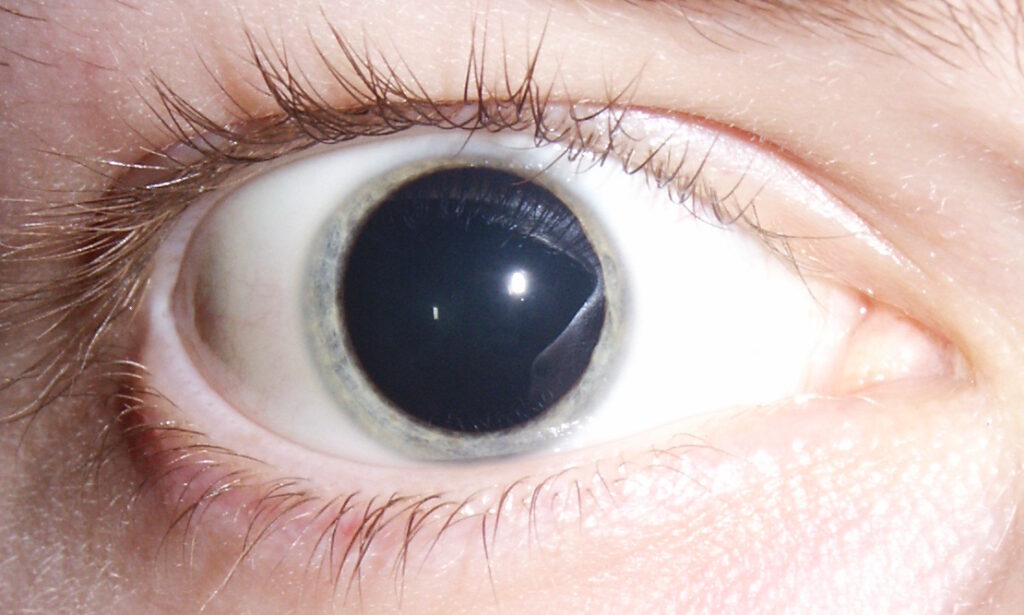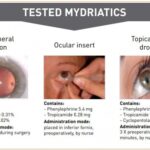Mydriasis refers to the abnormal dilation of the pupils, often due to neurological, pharmacological, or pathological factors. Under normal conditions, the pupils dilate in response to low light or emotional stimuli. However, persistent or excessive dilation without an appropriate trigger may indicate an underlying medical condition. Understanding the causes, symptoms, and treatment options for mydriasis is essential for proper diagnosis and management.

Understanding Pupil Dilation and Mydriasis
Pupil size is controlled by the autonomic nervous system, specifically the balance between the sympathetic (dilatory) and parasympathetic (constrictive) pathways.
- The sympathetic nervous system triggers mydriasis by contracting the dilator pupillae muscle.
- The parasympathetic nervous system regulates pupil constriction via the sphincter pupillae muscle.
- Disruptions in this balance may lead to prolonged or abnormal pupil dilation.
Causes of Mydriasis
1. Physiological Mydriasis
- Occurs in response to dim light or emotional stimuli (fear, excitement).
- Temporary and resolves once the stimulus is removed.
2. Pharmacological Mydriasis
- Certain drugs affect the autonomic nervous system, leading to pupil dilation.
- Common mydriatic agents include:
- Atropine
- Scopolamine
- Tropicamide (used in eye exams)
- Antihistamines (diphenhydramine)
- Stimulants (cocaine, amphetamines)
3. Neurological Causes
- Cranial nerve damage (CN III palsy) – Affects parasympathetic control, causing unilateral mydriasis.
- Brain trauma or stroke – Increased intracranial pressure (ICP) can compress the oculomotor nerve.
- Horner’s syndrome – Disruption of sympathetic pathways causes asymmetric pupils (one constricted, one normal).
- Seizures and migraines – Temporary neurological dysfunction can lead to pupil dilation.
4. Ocular Trauma and Injury
- Direct trauma to the eye can damage the iris sphincter, resulting in permanent mydriasis.
- Blunt force trauma may lead to traumatic iridoplegia, where the iris loses its ability to contract.
5. Toxic and Chemical Exposure
- Botulinum toxin (Botox) can inhibit parasympathetic function.
- Carbon monoxide poisoning may cause pupil abnormalities.
6. Medical Conditions Associated with Mydriasis
- Adie’s tonic pupil – A benign disorder where one pupil remains persistently dilated.
- Glaucoma – Some forms, such as angle-closure glaucoma, can lead to pupil dilation.
Symptoms of Mydriasis
While dilated pupils are often the primary symptom, associated symptoms depend on the underlying cause:
- Blurred vision – Pupils cannot constrict properly to adjust focus.
- Light sensitivity (Photophobia) – Excessive dilation allows too much light into the eye.
- Headaches or eye pain – Especially if linked to migraines or glaucoma.
- Unequal pupil size (Anisocoria) – A sign of potential nerve damage or neurological disorder.
Diagnosis of Mydriasis
A thorough evaluation is required to determine the cause of persistent pupil dilation.
1. Medical History and Symptom Assessment
- Recent drug use, injuries, or neurological symptoms.
2. Eye Examination
- Pupil reactivity test – Checks how pupils respond to light.
- Slit-lamp examination – Assesses structural damage to the iris.
3. Neurological Testing
- Brain imaging (CT scan, MRI) – Identifies strokes, tumors, or brain injury.
- Oculomotor nerve assessment – Evaluates for cranial nerve III dysfunction.
4. Pharmacological Testing
- Pilocarpine eye drop test – Helps differentiate between Adie’s pupil and other causes of mydriasis.
Treatment of Mydriasis
The approach to treating mydriasis depends on the underlying cause.
1. Treating Underlying Medical Conditions
- Trauma-related mydriasis – Requires surgical repair if the iris sphincter is damaged.
- Neurological mydriasis – Treatment focuses on addressing nerve damage or intracranial pressure.
- Glaucoma management – Medications such as beta-blockers and carbonic anhydrase inhibitors reduce intraocular pressure.
2. Managing Drug-Induced Mydriasis
- Reversing mydriatic agents – Cholinergic drugs (pilocarpine) may counteract dilation.
- Discontinuing stimulant use – In cases of recreational drug-related mydriasis.
3. Supportive Therapies
- Photochromic lenses – Help reduce light sensitivity.
- Artificial tears – Prevent dryness from excessive light exposure.
When to Seek Medical Attention
Mydriasis may indicate a serious medical issue if accompanied by:
- Sudden onset of severe headaches, dizziness, or confusion
- Unequal pupil size without a known cause
- Eye pain, vision loss, or neurological deficits
Mydriasis, while often benign, can signal serious neurological or ocular conditions. Prompt diagnosis and treatment are essential for managing symptoms and preventing complications. If persistent or accompanied by other alarming symptoms, medical evaluation is crucial.

